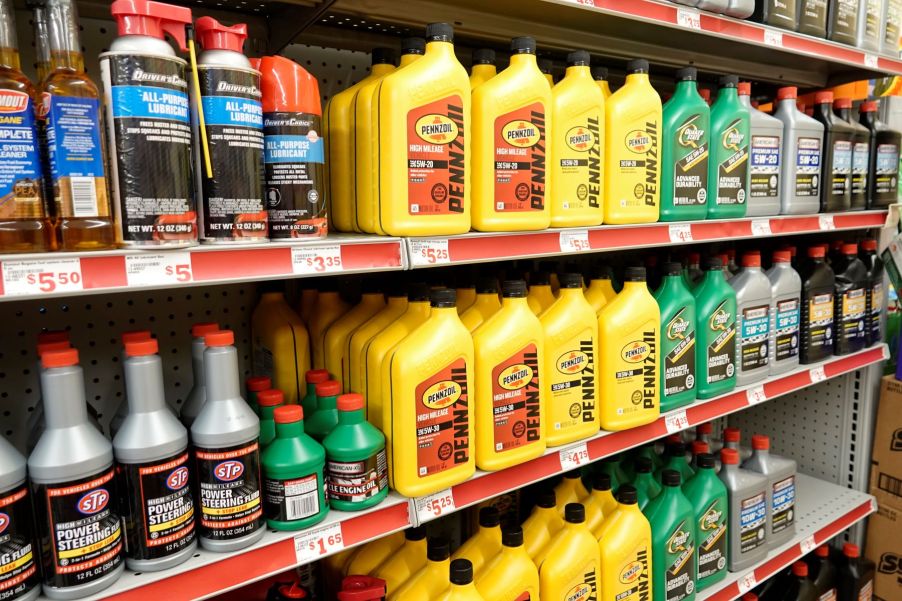
What Do the Numbers on Oil Cans Mean, Like 10W-40
Proper vehicle maintenance requires oil changes every 3,000-10,000 miles, depending on your situation. Which oil should you use to add back into the engine? Let’s look at the importance of choosing the right oil and what the numbers on the oil containers sold mean.
Does it matter which oil you use for your engine?
While you can find a few different types of oil on the market, that doesn’t mean you’re offered a choice of what to use. Manufacturers build engines to run off a specific kind of motor oil, and if you don’t heed the instructions, you could wear out your engine quicker than normal or possibly damage it.
Engine parts need oil to move and run properly. Motor oil has specific levels of viscosity, which refers to its resistance to flow. Low-weight oil runs like water. Meanwhile, higher viscosity means it will run like molasses. However, the thickness won’t be constant, as it’s affected by temperatures, according to Reasonable Rides.
So, if it gets colder, the oil will run thicker; if it gets warmer, it will thin out. The biggest problem with this is when certain engines don’t run properly with too thin of oil. That’s why manufacturers recommend the oil you should use in that vehicle.
What do the numbers on oil containers mean?

When you find the oil your engine needs, you might be wondering what the numbers mean that are printed on the container. Typically, there will be two numbers on each quart of oil. In some cases, there will be only one.
For example, you might see a quart that says SAE-30, which is a single-grade oil. In that case, the Society of Automotive Engineers (SAE) rated the oil’s weight with the number 30.
However, most engines nowadays run on oils with two numbers, like 10W-40 (a multi-grade oil). In this case, the 10 informs you that this oil will run lighter on startup and the ‘W’ refers to wintertime when colder temperatures are present.
Once the engine warms up to operating temps, the oil will thicken, which is indicated by the number 40 on the quart. The higher the number, the thicker the oil will be, and the lower it is, the thinner it will be.
Types of oil and what they’re used for
It’s not a good idea to switch the oil your engine’s manufacturer recommends with another one, such as using 5W-30 instead of 10W-40. However, you can choose the type of oil you want to put into your vehicle’s motor. There are three main kinds of oil on the market currently. They range from standard to semi-synthetic to full-synthetic oil.
Standard motor oil is made from a refined form of crude oil. It’s what most vehicles come with off the lot, and it’s the most inexpensive of the three. The biggest drawback to this type is that it breaks down at higher temperatures. Plus, it has inconsistent particle size within the oil itself.
There’s also full-synthetic oil, a blend of refined petroleum, minerals, etc. This oil helps fight rust and oxidizing and prevents the wearing of the parts from happening too quickly. It also lengthens the time needed between oil changes. However, the problem with this type is that it’s pretty expensive for a quart.
With semi-synthetic oil, you get a blend of the previous two types. Basically, you get many benefits of synthetic oil mixed with standard oil. The best part of using it is that it doesn’t cost quite as much as a quart of synthetic does.
Of course, there are a few sub-types available as well. For example, you can get some designed for higher mileage engines to help you keep your motor running strong for longer than usual. With all the oil brands out there, you can find one that will provide just what your engine needs for protection.
Choosing the right oil to add to your vehicle’s engine is important if you want to keep it from wearing out too quickly. Use what the manufacturer recommends, and your engine will run smoothly for quite some time.


